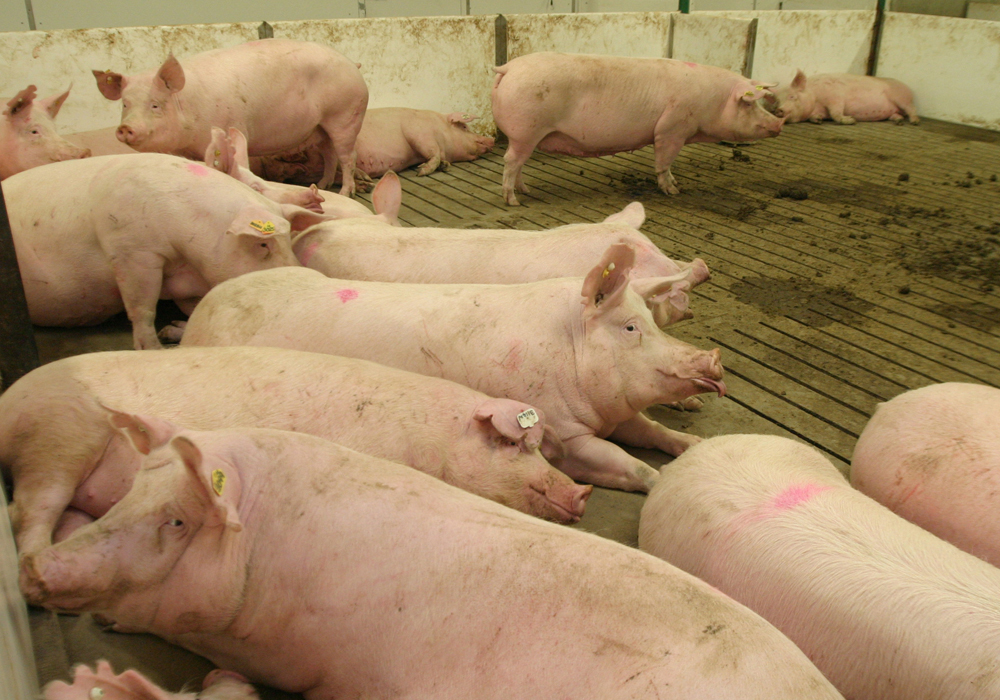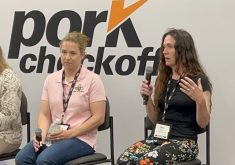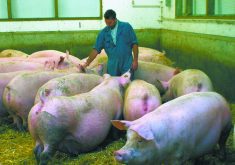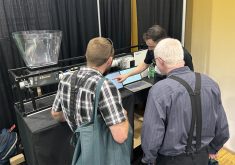Busy barn workers don’t always notice if a sow doesn’t stand up at feeding time, but it can indicate health problems
DES MOINES, Iowa — It was a case of the sows that didn’t rise.
Dr. Chris Rademacher of Iowa State University and colleagues were investigating a commercial sow farm with a high death rate and they found a crucial giveaway that wasn’t being noticed.
“Usually, if you drop the feed, everybody stands up,” said Rademacher in an interview during the World Pork Expo held June 7-9 in Des Moines.
“If somebody’s not standing up at that time, that’s a visual cue for the farm staff.”
Read Also

Trump’s tariffs take their toll on U.S. producers
U.S. farmers say Trump’s tariffs have been devastating for growers in that country.
The problem was the busy staff were making sure the feed was being delivered, then scrambling off to their next duties. If a sow wasn’t getting up to eat, nobody noticed immediately.
They would notice a few days later, when the sow’s condition worsened and they could easily spot she wasn’t well. Even with treatment, many such sows were culled, giving this barn the worst results in the 41-barn system.
“You hear from managers, we treated them, but it didn’t do any good,” said Rademacher.
“You did, but she was probably telling you seven to 10 days earlier that there was a problem.”
Many hog barn managers struggle with labour and workers have little extra time on their hands. But Rademacher’s team got the barn staff to watch the sows at every daily feeding to spot any that weren’t immediately rising to feed. They had one worker watch from the front and one from behind.
If a sow didn’t rise, they’d note which one, and then return later to do an assessment. Was the water supply plugged? Did she have a fever? Was she toe-tapping and showing early signs of lameness?
Any of those problems could be quickly addressed and most sows were soon fine. Mechanical systems can be cleaned. Early illness can be successfully treated. Early lameness can be cured.
The barn staff noticed an improvement right away because they weren’t having to deal with removing sick or dead sows after things went bad. Managers enjoyed seeing fewer culls and deaths.
Between the 23 weeks before the management change and the 23 weeks afterward, the annual sow mortality rate of that barn dropped by about 25 percent, to 12.5 percent from 17 percent. Seeing these results, the company extended the approach to its entire 41-barn system.
That caused a drop in sow mortality in the entire system, with the greatest gains coming in barns with the worst previous results.
“They saw immediate results. Because they started to treat those sows early rather than treating them late, they saw that the treatment started to work and immediately saw a reduction in sow mortality,” said Rademacher.
“It was all about making sure that we’re catching those (struggling) sows early.”
















